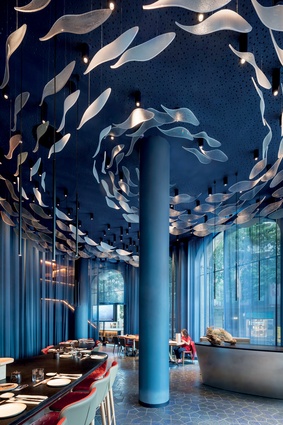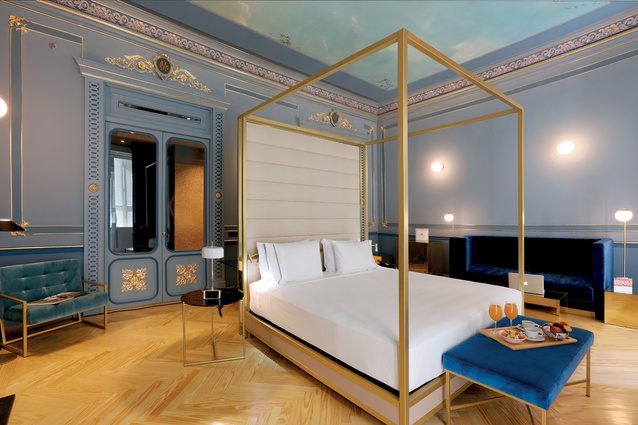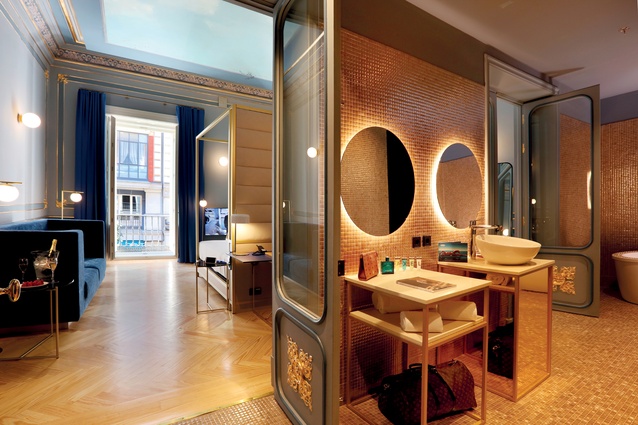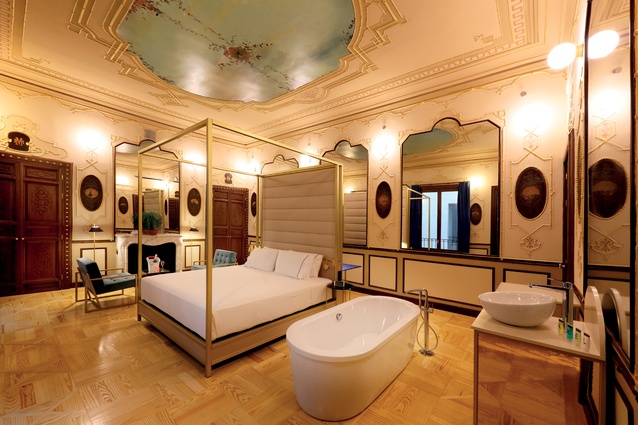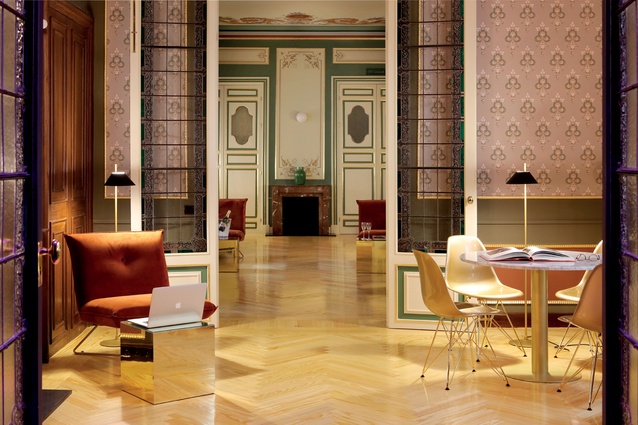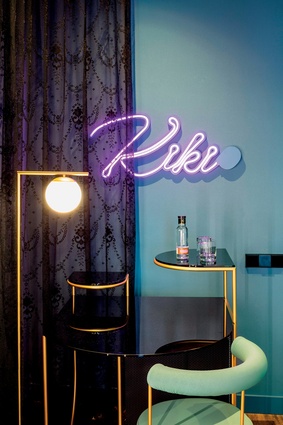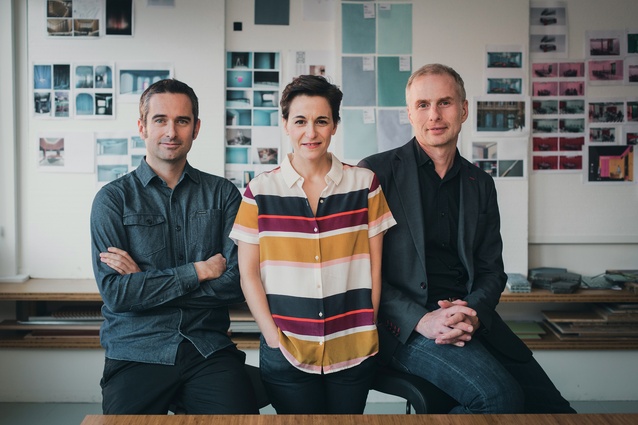‘Anti-style’: El Equipo Creativo
Although superstar Spanish chefs Albert and Ferran Adrià were crucial in the birth of interior design troupe El Equipo Creativo, it is the team’s self-baptised ‘anti-style’ ethos that has given it a serious edge in the hospitality design world. Tracey Ingram travelled to Barcelona to find out more.
Somewhere in Barcelona: a warren of narrow, nondescript corridors and seemingly identical grey doors. Surely this can’t be the home of El Equipo Creativo (EEC), whose haptic, vibrant interiors have reinvigorated the city’s hospitality scene – and are beginning to appear outside the bounds of its home town.
As if revealing a closely guarded secret, the door opens to a surprisingly large, airy space. Walls are plastered with prints: EEC’s works-in-progress. “It’s important to be surrounded by inspiration and materials,” says Natali Canas del Pozo of EEC, the studio she runs together with Oliver Franz Schmidt and Lucas Echeveste Lacy. “It helps to trigger new ideas – and it’s good for the team to know what everyone else is working on. Our mess helps us to be more creative.”
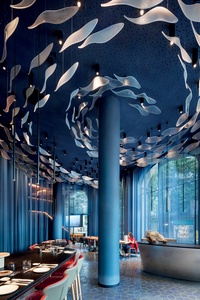
Creativity is in the studio’s DNA. Literally. The story goes that Oliver was a carpenter-cum-foodie, with connections in the restaurant world. He and Canas del Pozo were once colleagues in an architecture office in Barcelona. The pair reunited after a few years – during which time Canas del Pozo and Echeveste Lacy, who’s half-American, had secured master’s degrees from Columbia University, New York – and had made contact with world-renowned chefs Albert and Ferran Adrià.
Franz Schmidt was asked to assemble a team to create a boundary-pushing bar called Tickets. Naturally, he brought in Echeveste Lacy and Canas del Pozo. “The Adrià brothers called us ‘el equipo creativo’: Spanish for ‘the creative team’. It wasn’t our real name but we garnered a lot of press from that project. Any time the Adriàs were asked who designed it, the answer was always, ‘el equipo creativo’.”
Many more restaurants followed, and the studio was formalised: Canas del Pozo and Echeveste Lacy became creative directors and Franz Schmidt leads the technical team. “We still work closely together and we draw on each other’s strengths in each project.”
Despite building a career through hospitality hotspots, “we were never scared of being pigeon-holed”, says Canas del Pozo. “Actually, we were lucky. In 2008, architects were suffering the effects of the financial crisis. We, on the other hand, were busy. Now we’re happy to accept other projects, even though we still like doing restaurants. Each new interior is a new challenge and we don’t have a style we impose on projects. In fact, we’re a bit anti-style. If there is a similarity, it’s that we try to surprise ourselves while understanding what our client needs and converting that into a design.”
Calling her team “architects, not interior designers, who were never educated in the art of decoration”, Canas del Pozo describes EEC’s approach as the search for atmosphere via the architectural elements of space: walls, floors and ceilings. “We work with surface and skin but always three-dimensionally.”
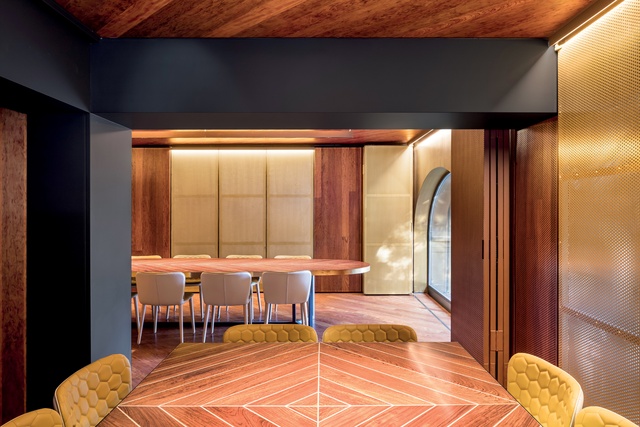
Many of the surfaces and materials involved in a project are designed in-house. Canas del Pozo pulls out a piece from the studio’s fast-growing material archive: a tabletop test for tuna restaurant, Tunateca Balfegó, which resembles a silky slice of sashimi. “Tables are such an important part of a dining space. Since we work on so many restaurants, and usually can’t find something suitable on the market, we often end up designing our own. Chairs, on the other hand, are another story; they take much longer to develop.”
Naturally branching out within the hospitality genre, EEC designed its first hotel last year. Barely anything in Madrid’s Axel Hotel touches the historical walls – “they were already so decorative”, says Canas del Pozo. Reviving the building from a squat, the designers kept the existing layout intact. Bedrooms are entered via bathrooms, the most important aspect of Axel’s private spaces. “It’s a gay, heterosexual-friendly hotel – and a bit provocative. To create theatre-like scenography, we played with mirrors, neons and curtains: black to reference the old ladies of Madrid, red as a link to matadors.”
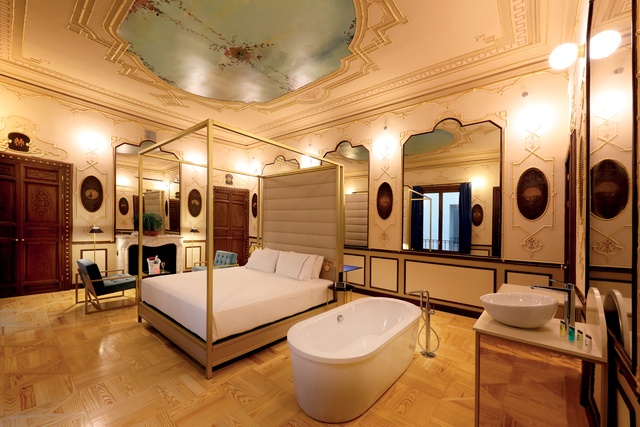
EEC has also broadened its geographical scope, with its first London project now open – Andina, a Peruvian café and restaurant – and other too-soon-to-talk-about spaces on the go. Working outside of Barcelona has its downsides, though. “We can be quite controlling – and you can’t control everything when you work abroad. We’re trying to find collaborators in areas to oversee these projects, especially since our work is rich in details.”
The Adrià brothers may have given EEC its start in hospitality but, now, brands outside of the industry are starting to cash in on the studio’s expertise. “We’re becoming more involved in what I can describe only as branding – trying to find the essence of a company. Brands approach us to help them reinvent themselves. They want to connect to customers through physical space but they don’t know how, exactly, or what that scenario might look like. Gastronomy is a good starting point as it can create experiences for customers that aren’t related directly to a company’s merchandise. And that’s what we do: create experiences.”
This article first appeared in Interior magazine.





